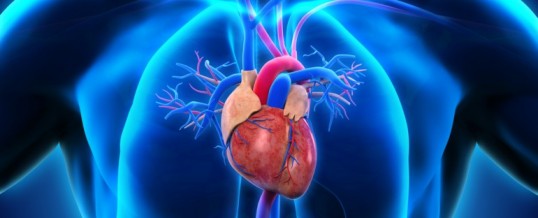
The term “heart disease” conjures up images of arteries filled with “plaque” (atherosclerosis). Sometimes we picture “hardening of the arteries” (arteriosclerosis), in which coronary arteries become thick and lose their elasticity. We often associate these types of heart disease with people who are obese, smoke, don’t exercise or eat too many hamburgers. So, if we maintain a healthy weight, stop smoking, exercise and eat better we have nothing to worry about, right? Wrong.
February is American Heart Month – a month dedicated to raising awareness about heart disease. It’s time for all of us to realize this is not someone else’s disease. Heart disease, of which there are many types and causes, kills more people in the U.S. than all types of cancers combined. In fact, 267,000 women die each year from heart attacks – six times more than the number of women who die from breast cancer. Furthermore, sudden cardiac death (SCD) is the largest cause of natural death in the U.S., causing about 325,000 adult deaths each year. SCD is responsible for half of all heart disease deaths.
Think of your heart as a pump powered by electricity. The heart’s chambers, valves, vessels and muscle are magnificently designed for architectural coordination of structure and function. Heart disease can strike any one of, or multiple components. Not only do we need to be aware of how to protect our heart’s physical integrity, but also its electrical continuity. Disease affecting either structure or function can cause a slow, agonizing death, such as the case with congestive heart failure in which patients drown in their own fluids, or unexpected, sudden death such as arrhythmias resulting in cardiac arrest.
Some causes of heart disease are beyond our control as is our predisposition to certain cardiac issues. It’s important to note that we are often unaware of our own specific vulnerabilities due to their silent nature. We can’t control our genetics, age or gender, but we can control a multitude of other causes:
- Smoking
- Poor Diet
- High Blood Pressure
- High Blood Cholesterol Levels
- Diabetes
- Obesity
- Physical Inactivity
- Depression & Anxiety
- Stress
- Infections
- Disease in other organs, such as the kidneys, which contribute to electrolyte disturbances
Coronary artery disease isn’t just clogged arteries, which can lead to heart attacks and permanent heart damage, but it can involved the structural integrity of the coronary arteries, as seen in spontaneous coronary artery dissection (SCAD). SCAD is a sudden tear in a coronary artery, causing acute bleeding into the vessel wall. This accumulation of blood creates a blockage, restricting or preventing blood flow to the heart muscle. SCAD can cause a heart attack as well as sudden cardiac arrest. It strikes without warning, and most of its victims are young and otherwise healthy women with no history of familial heart disease. Many of the women are either pregnant or in the post-partum period.
An irregular heartbeat (arrhythmia) is a type of heart disease, occurring when the electrical impulses that coordinate your heartbeats don’t work properly. Arrhythmias can be brought on by congenital heart defects, such as Wolff-Parkinson-White syndrome and also by electrolyte imbalances, either due to lifestyle or congenital issues. Arrhythmias such atrial fibrillation (a-fib) dramatically increases one’s risk of stroke. Other arrhythmias, such as ventricular tachycardia (v-tach) and ventricular fibrillation (v-fib) kill instantly if CPR, a defibrillator or other emergency medical interventions cannot resuscitate the victim. There are approximately 359,400 out-of-hospital cardiac arrests in the U.S. every year with a mortality rate of 90.5%. This loss of life is equivalent to four Boeing 747 airplanes crashing and killing everyone onboard every single day of the year.
Congenital heart defects of the heart’s structure, such as in atrial septal defect (ASD), is a hole in the wall between the two upper chambers of the heart. Sufferers often do not know they have the condition. Diagnosis may only be made upon autopsy following death by SCA. The valves of the heart can also be afflicted by disease as they are vulnerable to damage by infections. In addition, the heart muscle itself can be permanently damaged by disease or infection, as seen in cardiomyopathy. Pediatric cardiomyopathy is one of the leading causes of cardiac death in children, but an explanation for why it occurs remains unknown.
Our preoccupation with and fear of other conditions such as cancer, seems to obscure the fact that we are more likely to not only be afflicted by heart disease, but also die from it. In addition, the stereotypical (yet erroneous) image of the type of person who gets heart disease continues to remain steadfast. To truly comprehend the face of heart disease, all we have to do is look in the mirror and accept the fact that 1 in 3 adults in the United States have some form of heart disease and 1 in 3 women die every year from it. It’s time for all of us to realize this is not someone else’s disease.
ShareFEB
